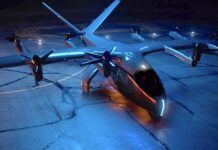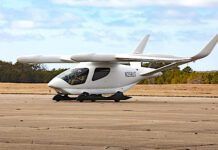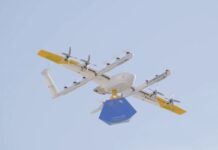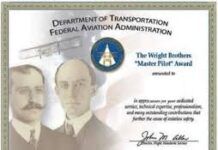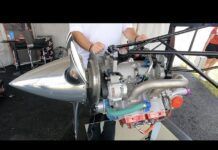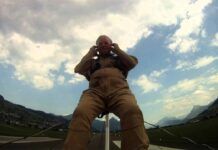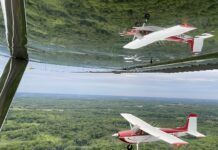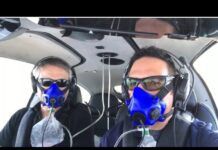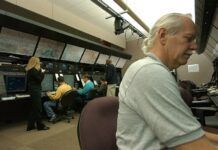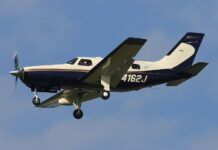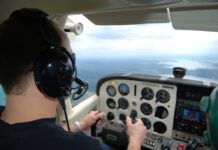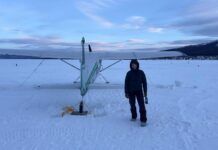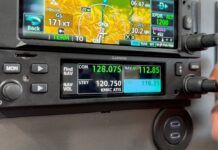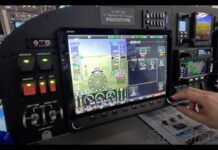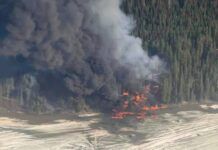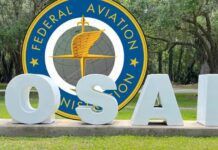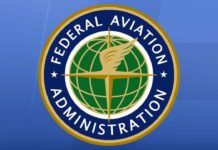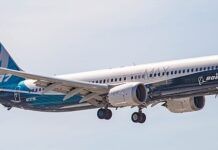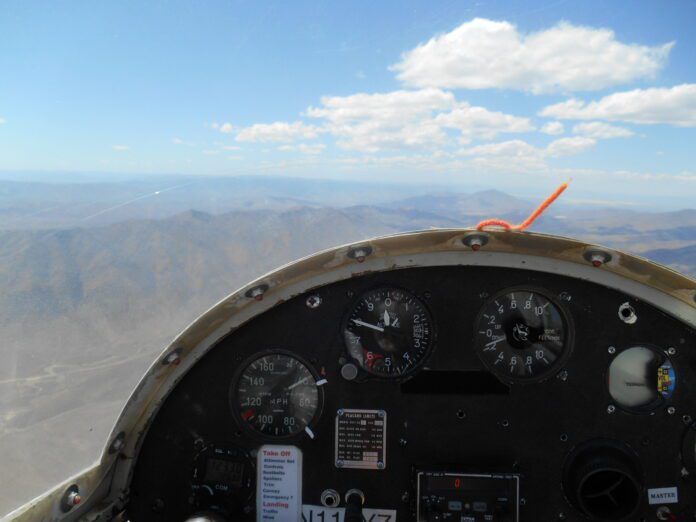Short Final: Soaring
Not far from the USAF Academy was Black Forest Gliderport (now closed). One of my fondest aviation memories is a wave-soaring flight over Pikes Peak in the early ’80’s. Dressed in cold-weather gear and breathing from a diluter-demand oxygen mask, we released at 7,500 MSL and then soared the wave to 21,000 MSL. I have the barograph to prove it as well as a photo looking down on the cog railway station on top of Pikes Peak. We could have gone higher but ATC wouldn’t allow it due to conflicts with the airliners going into (then) Stapleton. Returning to Black Forest, our altitude was still up in the teens. I asked if we could do spins to descend. One of my fondest aviation photographs is looking down on the hangar roof painted with “Black Forest” and in the frame I captured the yaw string fully out to the side proving we were in a spin. Those were the days, my friends.
Rob S.
Great story. Soaring is thriving today with Duo Discus, Discus 2s, and DG-1000s, contractor-flown Super Cub tow planes, and acro and racing teams that regularly travel to compete. Best leadership program at USAFA!
Bob W, ’95
Thank you for the story Wilhelm. It’s been over 30 years since I last flew a 1-26 or 2-33 but your story brought back many memories. We flew around central Illinois so our flights were all aero tows and thermalling but loads of fun. A lot of great stories.
Bill B.
I fly jets, turboprops, single and multi-engine seaplanes, helicopters vintagew–nearly every kind of aircraft–but perhaps the most fun in flying is gliders.
Other than a motor glider, NOBODY flies a glider by themselves–it takes a towplane, someone to run the wing to get the glider into position–someone to run the lines–each person on the flight line helps the others, and receives help in return. This results in the tightest-knit camaraderie in the aviation business. In what OTHER aviation activity can a neophyte mingle with the “best in the business”–and afterward, everybody socializes. Can you imagine flying with, socializing, or getting tips from “the best in the business” from any OTHER aspect of aviation?
There’s no “business use” for gliders–no pretense of using it for transportation–it’s just FUN–and a chance to have fun with friends. It’s something that has become rare in the General Aviation business!
Jim H.
Buying A Used Aircraft: Meyers 200
I was one of the two pilots who rode N71LB to her final landing. You are correct that it was a flameout that caused the crash. We had returned from a flight to the East Coast trying to sell the aircraft. We dropped the owner off in Greenville, MI from the failed attempt. When he got out, he must have kicked the baggage door lock because on takeoff it began to flap open and closed. The PIC, I was a passenger, opted to put the aircraft in a slip to hold the door closed. As we turned about a 2-mile final at KGRR, the engine flamed out as we turned on to the final approach.
Neither of us were prepared for the wild ride that Negative Torque Sensing produced. I can only describe it like being tied to the end of a whip. The prop governor would increase its oil pressure as the feathering prop spun faster. Then as the pressure increased the prop would flatten out for normal flight. It was like hitting a brick wall and whiplash as the prop cycled back and forth. I was instructed by the PIC to feather the prop if I could. The pitching of the nose of the aircraft was so extreme that he could not leave go of yoke to pull the feather button. Once the engine was feathered, control of the aircraft returned to normal.
Something I never noticed before in the state of Michigan was the practice of wind rowing fields. Trees are planted on the perimeter of the field to help protect the top soil from blowing off. This is a great practice for farming, however, not so good when you are crash landing in that field. Fortunately, the PIC got the aircraft lined up on a diagonal line from two opposite corners of the field. The impact immediately took the gear off of the aircraft and opened the bottom of one of the two wing fuel tanks. Just as we were a couple hundred feet from impacting the wind row trees, the left wing dug in and we did about a 180 degree turn on the ground. We both exited the aircraft, walked up to a house that was at the end of the field and started making phone calls to notify the authorities.
The Interceptor 400, in my opinion, had a design flaw. It could only feed out of one wing at a time. There was no interconnect that allowed feeding fuel out of the fullest wing in a turn. I was told by the PIC later that fuel starvation was the reason why the engine flamed out. I suspect that the turn to final, the slip on the aircraft, and the design flaw were the cause of this final crash and its first one too. I was told that when N71LB crashed the first time that the pilot was flying along the beach in California when it crashed into the Pacific Ocean. As the story was told, the pilot had begun circling just before the flameout happened.
I flew the aircraft as a FAR 135 charter aircraft that flew canceled check and blood tests to Detroit, Michigan and Philadelphia, Pennsylvania. It was fun having controllers think that I was a KingAir because of the speed and altitude that I flew at. The aircraft had some particular quirks. First was P-Factor on takeoff. If you had a crosswind from the right the question was always which would come first Rudder effectiveness or the left-hand edge of the runway. The aircraft also had a tendency to sit on its tail while loading. It was best to have someone in the pilot’s seat before loading luggage or aft passengers as a precaution.
I always had the feeling that this airplane was going to hurt someone someday. In fact, it was one of the biggest reasons why I left the employment of this charter operator. It did teach me that you really do not have a right to fly an aircraft that you do not know the systems on. Because the Factory had gone bankrupt, there were no resources for information about the aircraft. The only training I got was on the Garrett engine from their training department. Thank God that just opening the operators manual and trying to absorb as much as you can are gone forever with good reason. As I attended Flight Safety and an Airline training, the training diagrams, boards, and devices helped bury system operations so you could analyze what could be the potential problem. This knowledge made me a better pilot because if I could not figure it out, I knew who to call to help me with the issue.
Sadly, back in 1995 I had that proverbial Elephant sit on my chest at 2 AM and as they say, “The rest is history!”
Thanks for letting me [share] the “rest of the story!”
Douglas S.
When Things Go Wrong
Good article. Some years ago, I experienced an engine failure in my single engine plane while flying at night over central Texas. No cough, sputter, just immediate silence. I ran through the procedures to restart the engine but nothing changed. I called Fort Worth Center and told them that I had an engine failure, but I was fairly sure I was in gliding distance of the Marlin County airport south of Waco. I didn’t say Mayday, but the controller immediately assumed that was the case. Very shortly, he was back on the radio describing the airport and suggesting that, if possible, I land to the south because there were tall trees off the south end of the airport. He also said that he had contacted the Sheriff in Marlin and alerted him to the situation. After a successful landing, I called the center on the phone and told them we were down and safe. By the time I had hung up the phone, the Sheriff’s deputy was there to assist. When you are in that situation, you can’t see the flurry of activity that goes on at the controller’s end, but I was definitely impressed and grateful for their quick response and assistance.
John Mc.



